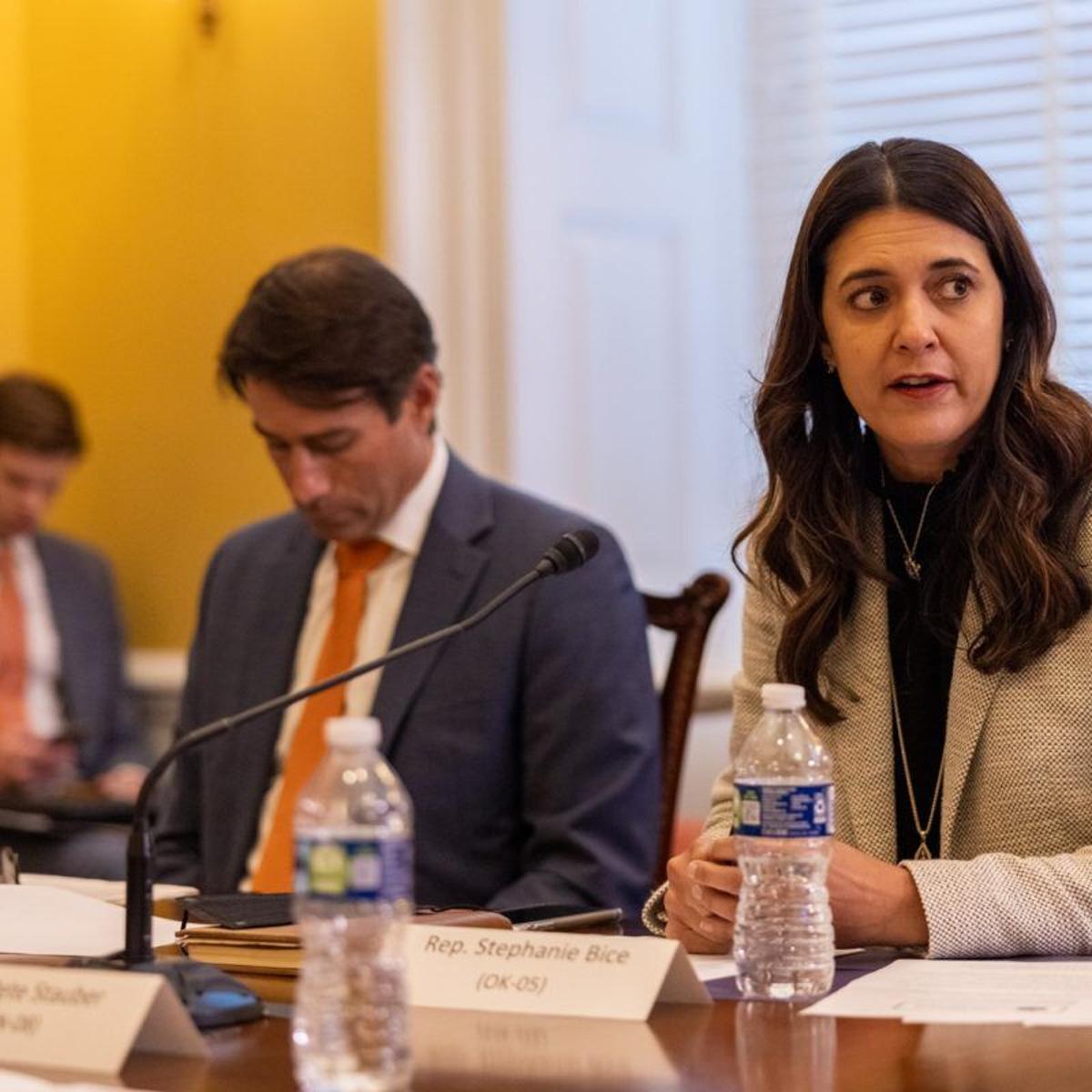
As a congressional subcommittee explored future weather research, Oklahoma Congresswoman Stephanie Bice reminded members how important it was to take a collaborative approach to weather forecasting research and development.
She’s a member of the Environment Subcommittee of the U.S. House Committee on Science, Space and Technology and addressed members as they started a hearing titled “What’s the Forecast: A Look at the Future of Weather Research.”
“The largest improvements in weather forecasting can be directly attributed to both basic and applied research,” Bice said. “Collaboration across the weather enterprise is critical to conducting this research and translating it so it can be successfully deployed on a commercial scale.”
Bice said no one sector can develop a final forecast on its own and the final forecast must integrate behavioral and social science to make sure people fully understand it.
“That is why transitioning research into operations requires buy-in and collaboration from everyone. It cannot be a competition among ourselves.”
Among the witnesses who testified was Dr. Frederick H. Carr, Professor Emeritus, School of Meteorology, University of Oklahoma.
Others were Dr. Scott Glenn, Board of Governors Professor Center for Ocean Observing Leadership of the Department of Marine and Coastal Sciences, Rutgers University; Dr. Bradley Colman, President-Elect of the American Meteorological Society; Director of Weather-Strategy, Bayer & The Climate Corporation; and Dr. Kevin R. Petty, VP, Weather and Earth Intelligence, Spire Global, Inc.
Below is the full opening statement offered by Rep. Bice.
Thank you, Chairwoman Sherrill, and thank you to our entire panel of witnesses for taking the time to share their expertise with us this morning.
Weather information does more than help us decide how many layers to wear or if we need to carry an umbrella. Forecasts based on accurate information are our number one tool in protecting of life and property during severe weather events.
That’s extremely important because the United States experiences more extreme weather events than any other country. According to the National Weather Service, a typical year in the U.S. sees 26,000 thunderstorms, 5,000 floods, 1,300 tornadoes, and six Atlantic basin hurricanes.
Luckily academia, government, and industry have come together in collaboration to improve the timely delivery and overall accuracy of weather products and services.
Collectively known as the U.S. Weather Enterprise, each sector – public, private, and academic – plays a critical role in understanding, observing, forecasting, and helping warn communities of danger.
The largest improvements in weather forecasting can be directly attributed to both basic and applied research. Collaboration across the weather enterprise is critical to conducting this research and translating it so it can be successfully deployed on a commercial scale.
For example, atmospheric data collected from a satellite needs unique computer modeling and processing power to be useful. And the final forecast or output product must integrate behavioral and social science to make sure people fully understand it and the impact.
No one sector can develop and do all of this on its own. That is why transitioning research into operations requires buy-in and collaboration from everyone. It cannot be a competition among ourselves.
To aid in our forecasting goals, there are countless emerging technologies that can and should be deployed. Automated surface vehicles and gliders in the ocean, drones in the sky, and advanced radar systems on the ground all have the potential to collect data that can supplement current federal efforts.
Pursuing this research and subsequent commercialization will be invaluable to the United States and our communities.
First, it will help us catch up to the European Union, which continues to outperform us with more accurate forecasting models.
Second, it will support our economic growth. Essential pillars of our economy are dependent on knowing what the weather will be.
For example, we need solar and wind data for renewable energy production; precipitation information for agricultural production; water management analysis for urban communities; and accurate predictions for road, marine, and aviation transportation.
These are all areas of increased investment, and all of them require forecasts for safe and efficient operation.
I can’t think of a better panel to address this critical topic. We have representatives from academia, the private sector, and professional societies.
I especially want to extend my warmest welcome to Dr. Fred Carr, a fellow Oklahoman and Professor Emeritus at the University of Oklahoma.
Although I’m an Oklahoma State Poke myself, I’ll admit OU is widely recognized as a national leader in meteorology and has made vital contributions in this field.
In fact, the entire state of Oklahoma has long been viewed as the center of weather advancement in the U.S. and I look forward to hearing how the National Weather Center in Norman is continuing to lead critical research and development.
Again, I want to thank our witnesses for being here today and I look forward to each of your testimony. Thank you, Chairwoman Sherrill, I yield back the balance of my time.





